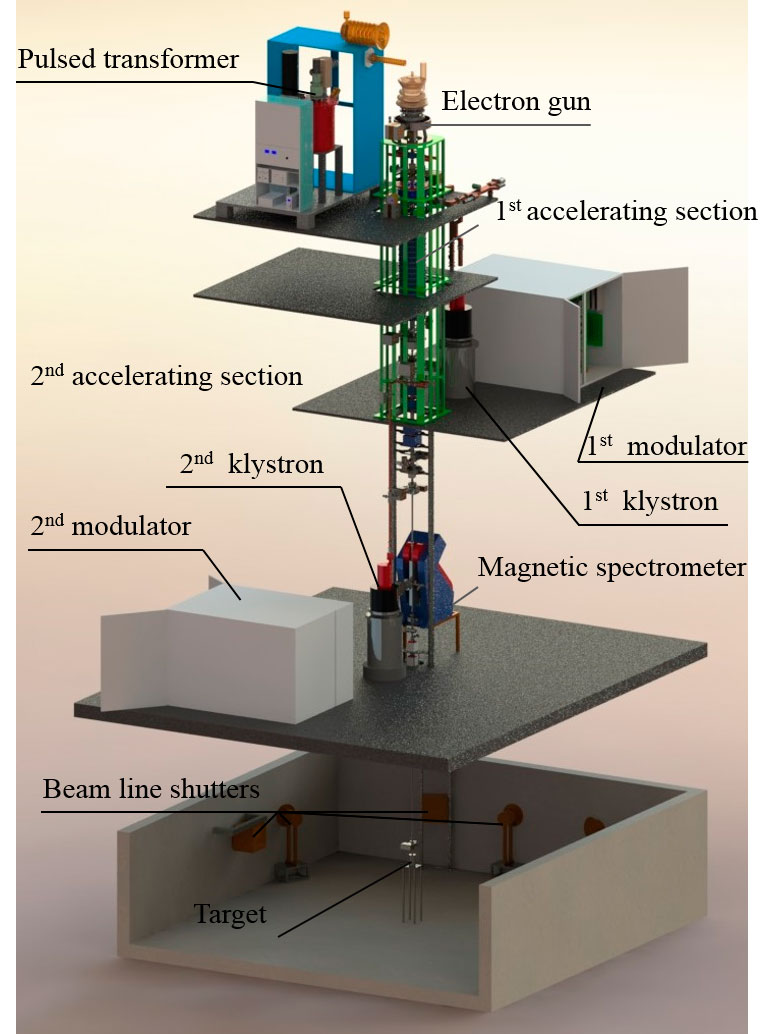Linear electron accelerator LUE-200 was designed at the Budker Institute of Nuclear Physics of Siberian branch of RAS (Novosibirsk) as a driver for the intense resonance neutron source IREN.
At the beginning a nonmultiplying neutron producing target will be used.

Layout of the IREN facility
Electron gun
LUE-200 electron source is a 2-electrode electron gun with an oxide thermocathode 12 mm in diameter. The cathode is fed by a 200 kV pulsed transformer. The anode – wall of the vacuum chamber with a hole 43 mm in diameter closed with wire frame made of stainless steel. Electron gun provides a pulsed electron beam with a peak current of 8 A, duration of 250-300 ns, repetition rate of 50 Hz and emittance of ≤ 0.01·π·cm·mrad.
Accelerating system
Accelerating system consists of an RF buncher and 2 short (3 meters long) accelerating sections with a high acceleration rate. The accelerating sections were designed and manufactured at BINP (Novosibirsk). An accelerating section is a circular blinded waveguide with constant impedance fed by RF power. RF power comes from klystrons – RF power amplifiers of 10 cm frequency range (2856 MHz). The prototype of the accelerating system was tested at the foreinjector of the VEPP-5 complex of BINP. During the tests the maximal electric field of 45 MV/m and average accelerating rate of 35 MeV/m were achieved.
The full-scale accelerator project foresees two accelerating sections. At present, one accelerating section is used; the second one is replaced with a drift section surrounded by two quadruple lens doublets.
Magnetic spectrometer
To measure the spectra of accelerated electrons, a broadband magnetostatic analyzer with a magnetic field perpendicular to the beam direction is used. A magnet E-core with a variable magnetic rigidity of 0.166 – 0.7 T·m is placed after the drift section. The electron beam in the spectrometer magnetic field is turned up to 90 degrees and extracted from the spectrometer vacuum chamber through a 50-micron stainless steel window. Then, turned electrons hit the position-sensitive detector, which makes it possible to measure electron energy with a relative accuracy ΔE/Е no worse than ±5%.
Target
Neutron producing target is made of tungsten-based alloy and represents a cylinder 40 mm in diameter and 100 mm in height placed within an aluminum can 160 mm in diameter and 200 mm in height. Distilled water is circulated inside the can, providing target cooling and neutron moderation. Water layer thickness in a radial direction is 50 mm. Target dimensions and water moderator thickness were optimized with the Monte Carlo simulation.


